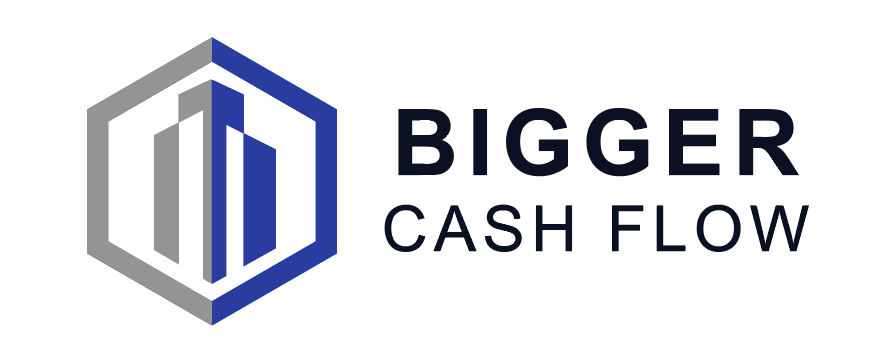Real Estate 007: Rental Property Criteria
/Now that you have identified a market, its important to start developing a criteria (again, a ship with no clear direction is sailing towards nowhere) and analyzing properties.
So how does an investor analyze properties? Below are some metrics that I use to evaluate rental properties. Remember to subscribe to my blog to receive updates as well as gain access to my free cash flow calculator and rental property criteria.
1. Cash on Cash (Used when financing a property)
To calculate the cash on cash return percentage, I take the net monthly income after all mortgage, insurance, property taxes, property management fees, vacancy and maintenance expenses are included, and annualize the amount. That amount is divided by your total cash invested into the property.
Below is a property analysis using real numbers of a sample investment in the midwest, USA.
Net Cash flow of $174.13 * 12 months = $2,089.56 divided by total out of pocket cash $13,600 down payment + $3,400 estimated costing cost 5% = $17,000.00
Cash on Cash %: Net Annualized Cash Flow / Total Cash Invested
12.29% (rounded): $2,089.56/$17,000.00
2. Cap Rate (Used when paying all cash)
The Cap Rate is used to make comparisons between similar rental properties. By taking the Net Annualized Cash flow / Purchase Price, you arrive at the Cap Rate of a rental property. This method is more meaningful when an investor pays for a property all cash thereby calculating their annual return on their lump sum of money. Please refer to the picture above that illustrates the Cap Rate calculation on this property
Cap Rate %: Net Annualized Cash Flow (no mortgage) / Purchase Price
8.30% (rounded): $5,643.96/$68,000.00
3. Rent to Value Ratio
Another quick measure of relative costs of buying and renting across different markets is the rent to value ratio. As mentioned in my previous post of cyclical and linear markets, I have generally observed that cyclical markets tend to have a lower rent to value ratio, meaning you will make less by renting out of property relative to its purchase price, compared to linear markets with a higher rent to value ratio meaning its a better market for investors looking to cash flow on their investment properties. The rent to value ratio is calculated simply by taking the gross rent divided by the purchase price of the property
RTV %: Gross Monthly Rent / Purchase Price
1.21% (rounded): $825/$68,000
4. Debt Coverage Ratio
The debt coverage ratio is not often used by all investors, but I like to use it to gauge the cash flow that is generated to pay my mortgage on the property. It is calculated by taking the Net Annualized Cash Flow / Total Debt Service owed to the lender. A debt coverage ratio of less than 1% means that the buyer will not be able to pay the current mortgage without using their own funds (i.e. negative cash flow). A ratio greater than 1% means that the buyer can use cash flow from the investment property to pay the mortgage.
Debt Coverage Ratio %: Net Annualized Cash Flow (no mortgage) / Annualized Mortgage Payment
1.59% (rounded): $470.33 * 12 months / $296.20 * 12 months
So what do I look for when analyzing rental properties?
Great question. As I mentioned previously, I am a buy and hold investor primarily focusing on single family homes in strong working class (blue collar) neighborhoods for positive cash flow. Note that this criteria is quite fluid and used as a basis to narrow down my search from a pool of 50+ properties at any given time. Note: these are my "rules of thumb" as of writing date, and can change any time.
When Financing a property: Net monthly cash flow (after all expenses)> $200 per unit
Assumptions used: 5% closing costs, 8% vacancy reserves, 8% maintenance reserves
Neighborhood Rating: B- or above (Note that each investor may rate neighborhood's differently). For example, some investors rate A/B/C based on ratio of owners/renters, crime stats, schools, other statistics and demographics.
Property Type: Single Family 3 bedroom 1 bath (or more), ideally with a Garage in markets such as Kansas City, where there is heavy snow and hail. Note: Some markets (i.e. Memphis), it is common to have a carport instead of a garage. Further, 2 bedroom homes are more difficult to lease. 3 bedroom houses are most common, thereby increasing the tenant candidate pool.
Size of home: Ideally 1,000 - 1650 sq ft. Not too large, nor too small. Note: I do this on purposes as the extra sq ft. of ~800 (ex: 2,400 sq ft. homes) do not necessarily correlate to the same ratio of increased rent. Also, replacing a roof/flooring on a 2,400 sq ft. home is significantly higher than a 1,200 sq. ft. home.
Low Crime Areas
No HOA fees. The HOA fees are unpredictable and can kill your projected cash flow.
Cash on Cash: 12-15% or higher (Depends on market, type of property, location, etc.)
Rehab including updates to CapEx items 5 years life or less (Water Heater, HVAC, etc.) 10 years life or less (roof). Note: The amount of rehab (after reviewing scope of work) may result in a lower or higher maintenance reserve from base of 8%.
Rent to Value Ratio: At least 1% or higher, ideally 1.30% or higher
Please make sure you do your due diligence and talk to your CPA/Attorney/Financial Advisor before making any investment decision.
Good Luck!













